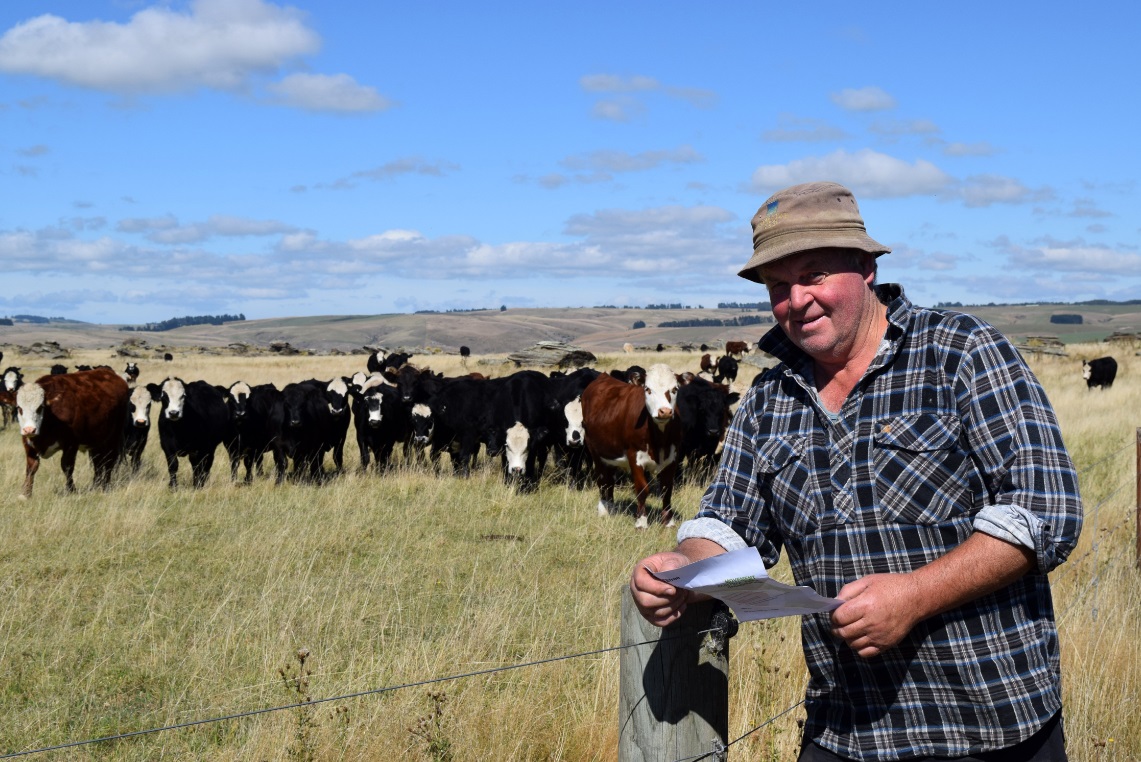
An Ospri spokesman said progress in tackling bovine tuberculosis in Otago has prompted the animal disease management agency to end some farmers in the region needing to test cattle and deer within 60 days before moving them off-farm.
From March 1 this year, the reduction of the Otago Movement Control Area benefited more than 690 herds across more than 510,000ha in the region. The area now covers about 305,000ha.
Although the loosening of restrictions would result in about 32,000 fewer tests in the area, the farmers still must complete an annual whole-herd Tb test for cattle and deer older than 1 year.
Barewood Station manager Marty Deans, the Ospri Otago committee chairman, was one of the farmers to benefit from the change.
He began working on the 6300ha sheep and beef farm at Pukerangi, between Outram and Middlemarch, in 1997.
The disease had infected cattle under his care at three different times in his farming career and prompted him to join the committee about 15 years ago.
Despite progress being made, he is calling on farmers to play their part to eradicate it.
"I don’t want to go through Tb again."
He runs 19,000 ewes a year and trades up to 1200 cattle — buying mostly Angus to finish them prime, "chasing intramuscular fat".
If any animal became infected, the whole herd must remain on-farm and continue to be fed until they were deemed clear of the disease.
"It’s a major financial cost."
He joined the committee to help in the fight to eradicate the disease.
"We have got close to eradicating Tb before and we took our foot off the throttle and it got away on us again and I don’t want to see that happen again, I want to knock it on the head."

The fight was continual as the disease had to be eradicated from herds and wildlife, such as possums, mustelids and wild pigs.
The aim of Ospri was to eradicate the disease rather than every pest which had potential to carry it.
Deans was doing his part to control possible hosts of the disease on Barewood Station.
Control methods include night-shooting and laying bait stations for possums, including at "gnarly spots" such as about 9km of Deep Stream Gorge which runs through the farm.
About three times a year, a contractor shoots wild pigs from a helicopter.
The helicopter’s downdraft "beats the bush", scaring the swine into open spaces.
On one expedition, a contractor shot 365 pigs from a helicopter.
No matter how successful an expedition was, pest control must continue, as they always returned.
A new challenge for farmers controlling the pest population was the number of new forestry blocks being planted.
The forests were a "nursery for pigs and possums".
Although progress was being made in tackling the disease, he expected pests in "dirty" areas of Otago would pass on the disease to stock.
The chances of the disease spreading was increased due to the calf sale season being under way in the South and cattle moving between farms.
He urged farmers to keep their NAIT account up to date so in the event of an outbreak, Ospri could trace animals and their movements more swiftly and determine if the infection was wildlife related or from livestock movements.
If a herd got infected, the farmer in charge of the animal should not consider it a black mark against their name. "They shouldn’t take it personally."
Support was available to farmers with infected stock.
The reduction in the Otago Movement Control Area was positive but he was always aware no matter how vigilant farmers were, there was always a chance of their stock testing positive for the disease.
"No matter how much you dot your I’s and cross your T’s, it can sneak up and bite you... I try my hardest to keep the pigs out and I’ve recently had the possum boys in but the next test I could go one."
History of fighting spread through nation
●Battle begins in the 1950s and infections peak at about 1700 herds.
●Otago Movement Control Area introduced in the 1980s.
● Now 25 herds infected nationally, including one herd in Otago and none in Southland.
●Bovine tuberculosis eradicated from about 3million ha across New Zealand.
● A drop in infections was attributed to movement restrictions, possumcontrol, wildlife surveillance, on-farm testing and slaughter surveillance.
● Ospri aims to eradicate the disease in livestock by 2026, in possums by 2040 and from all hosts by 2055.
SOURCE: OSPRI














